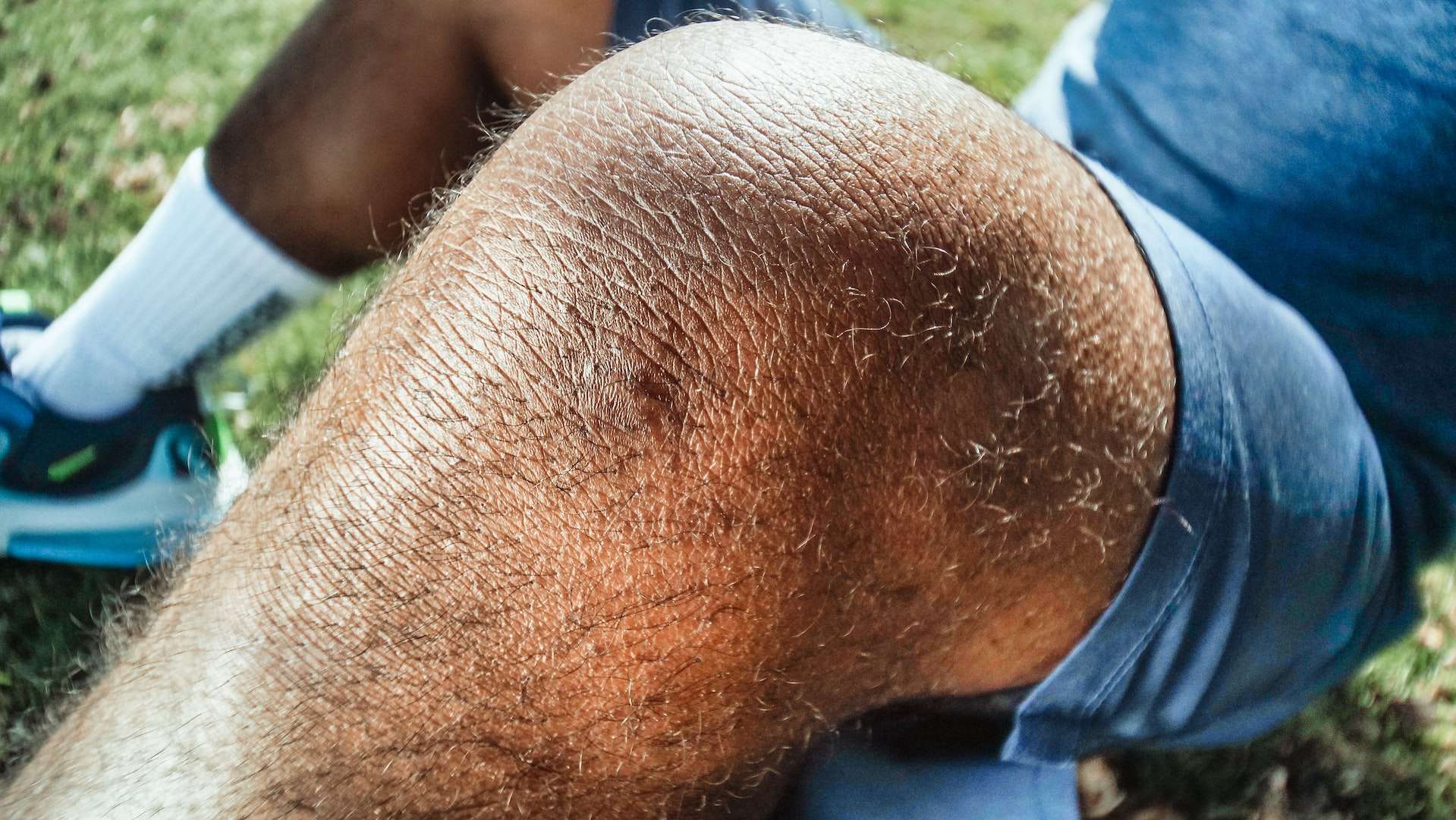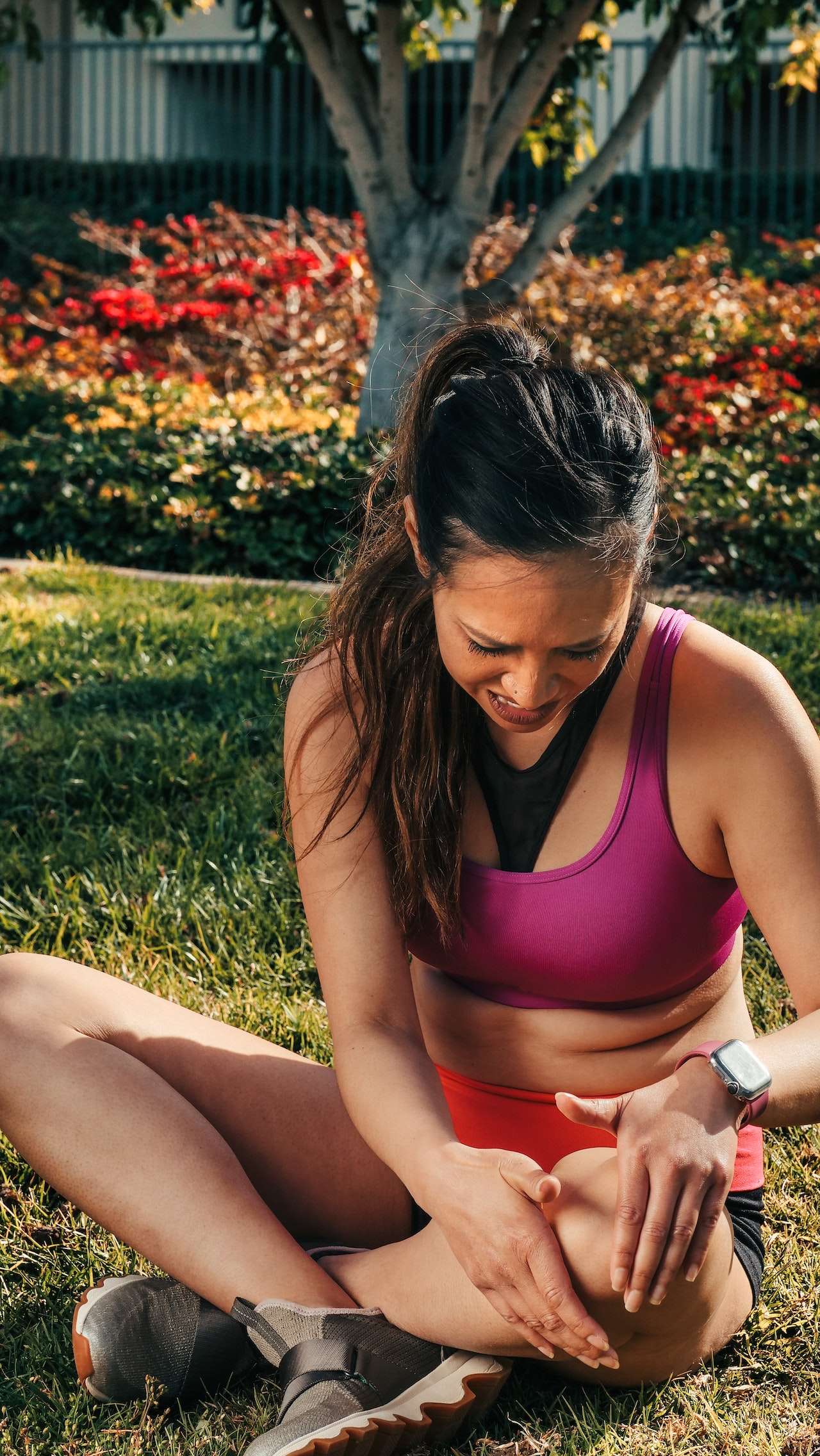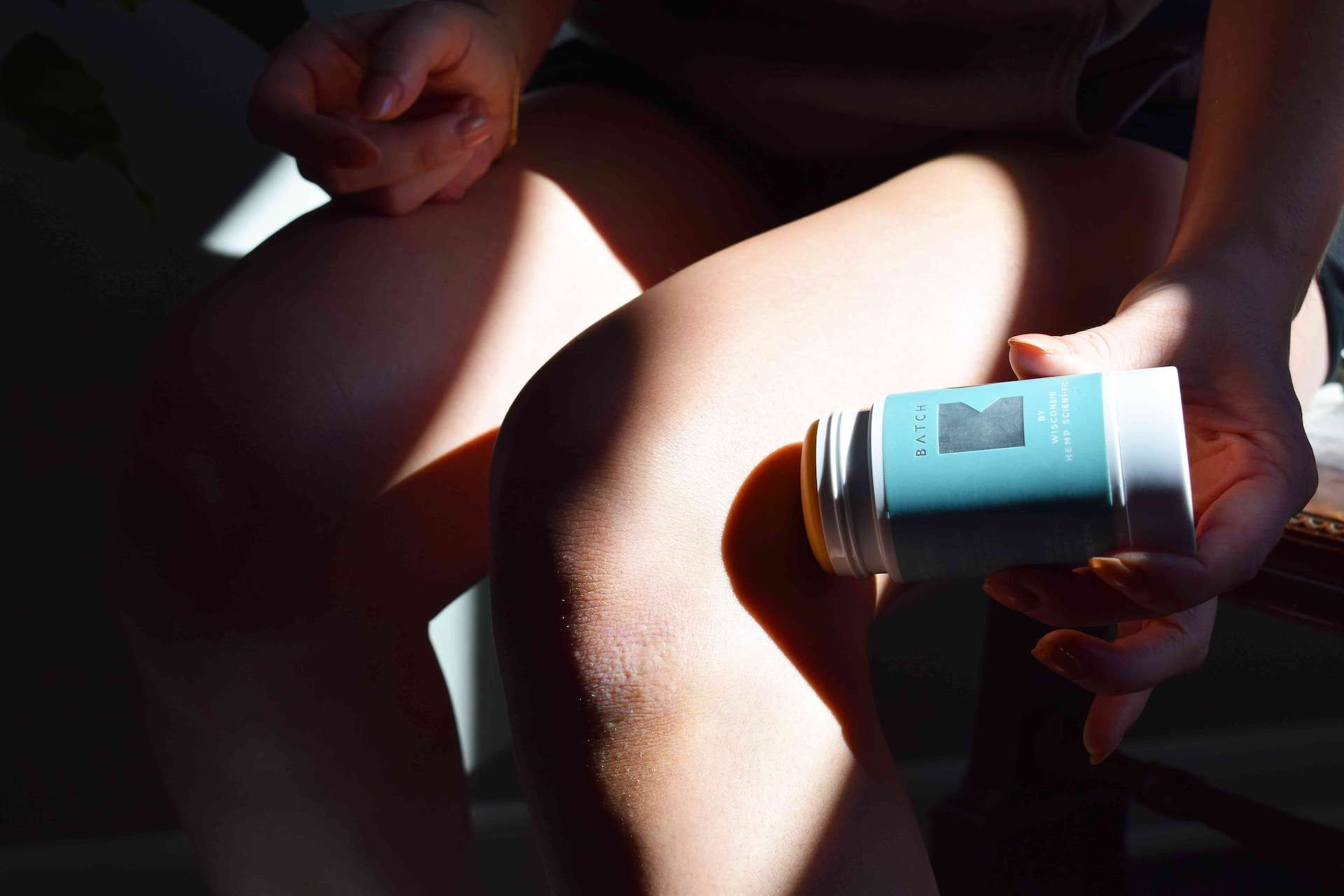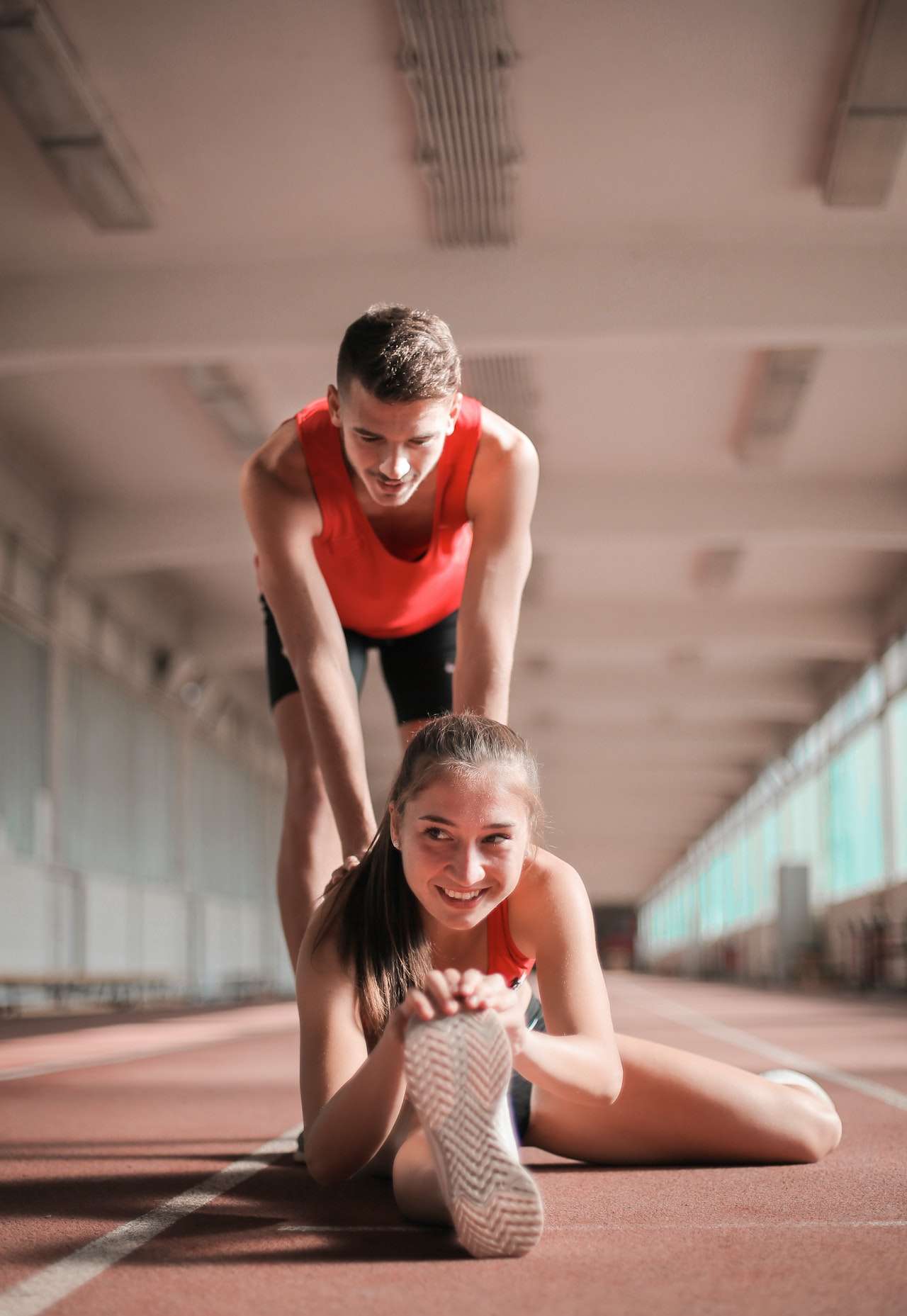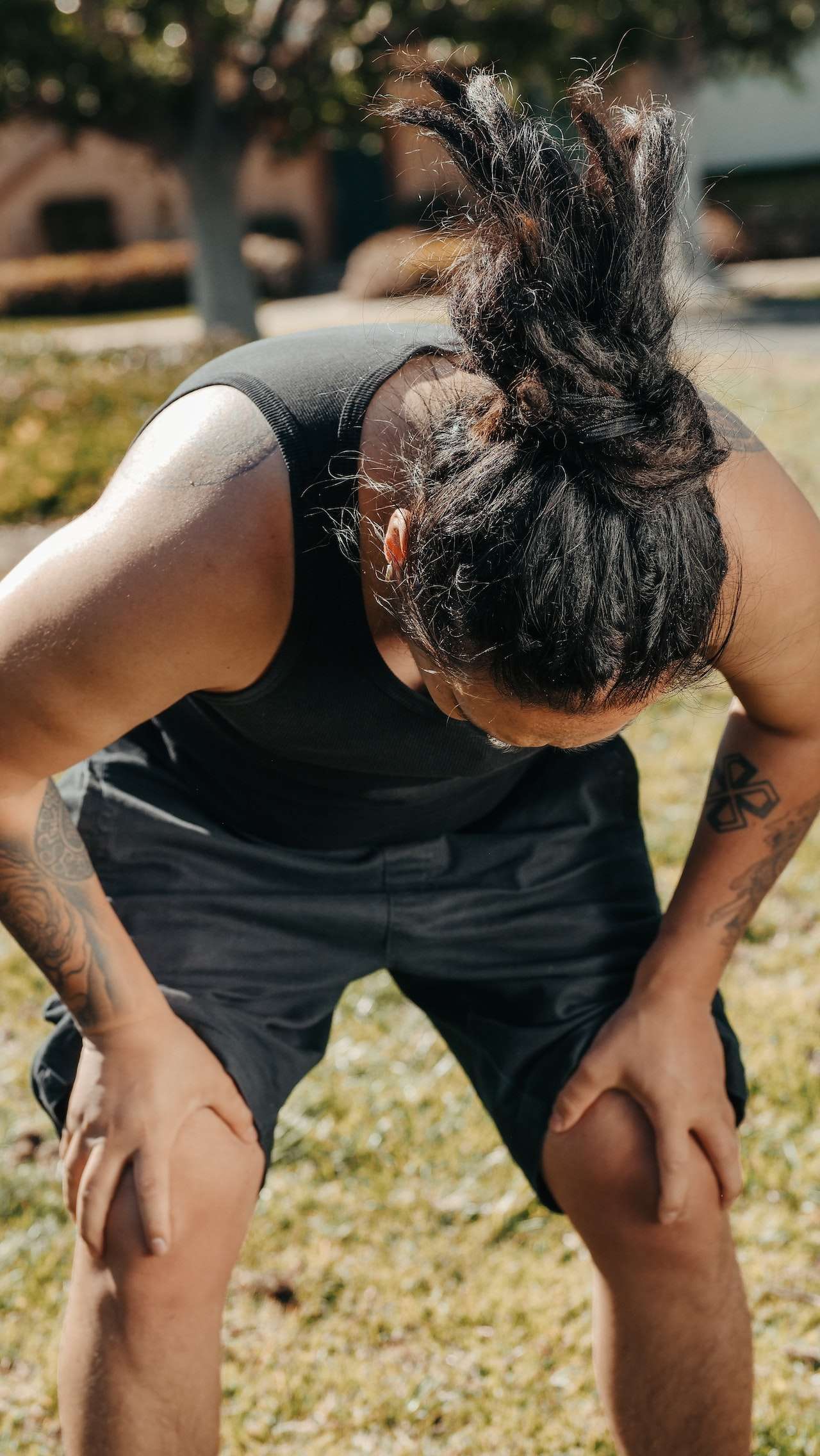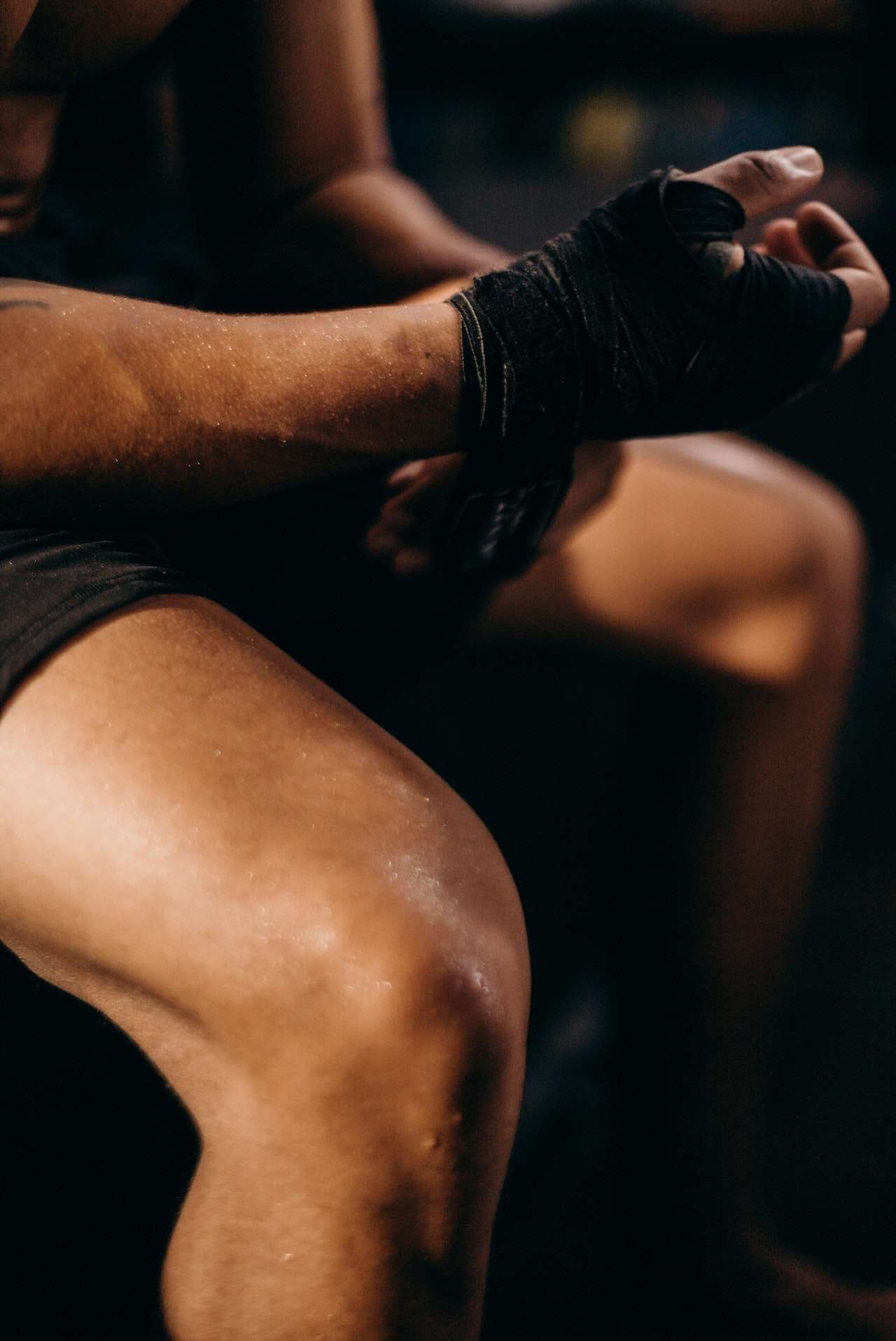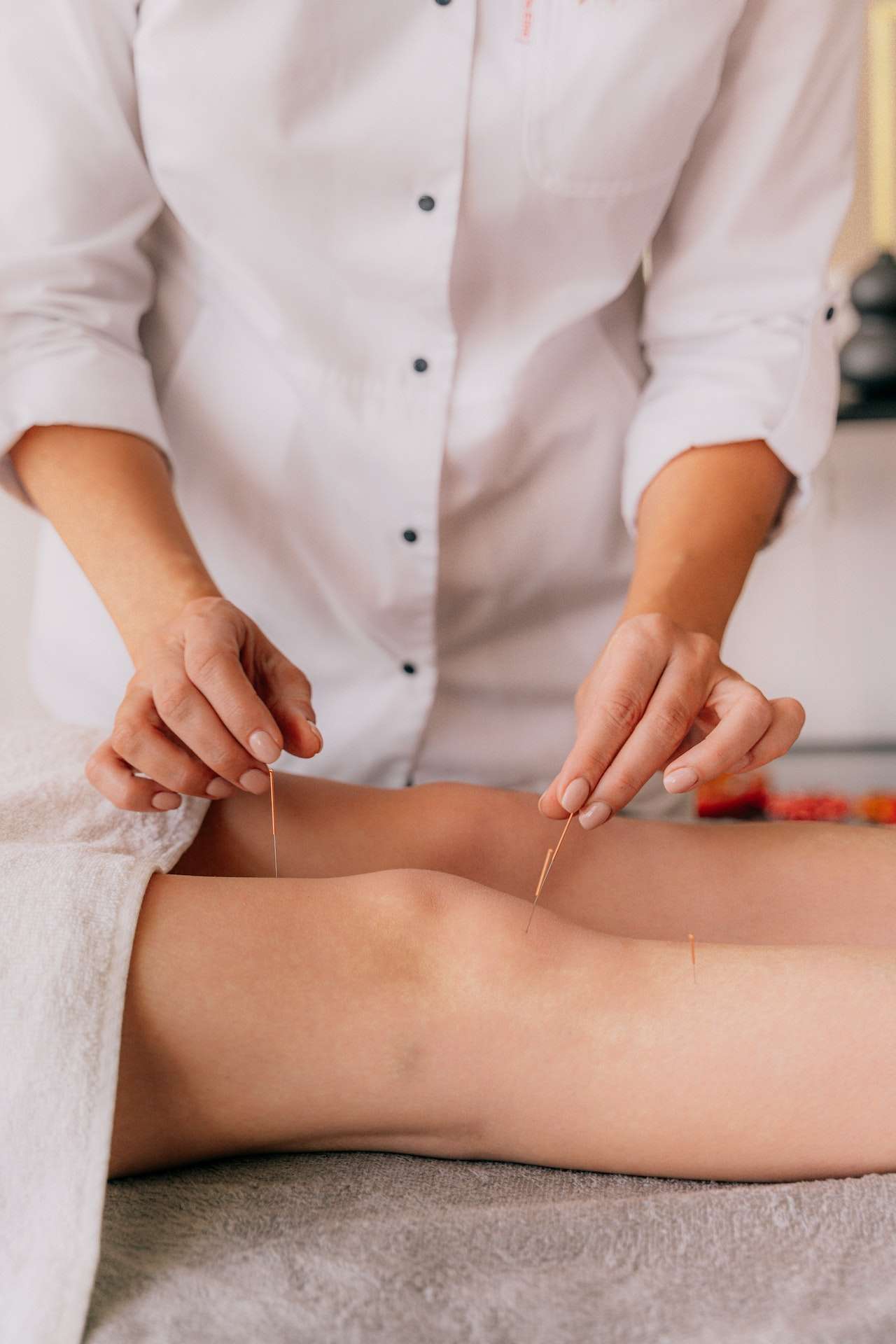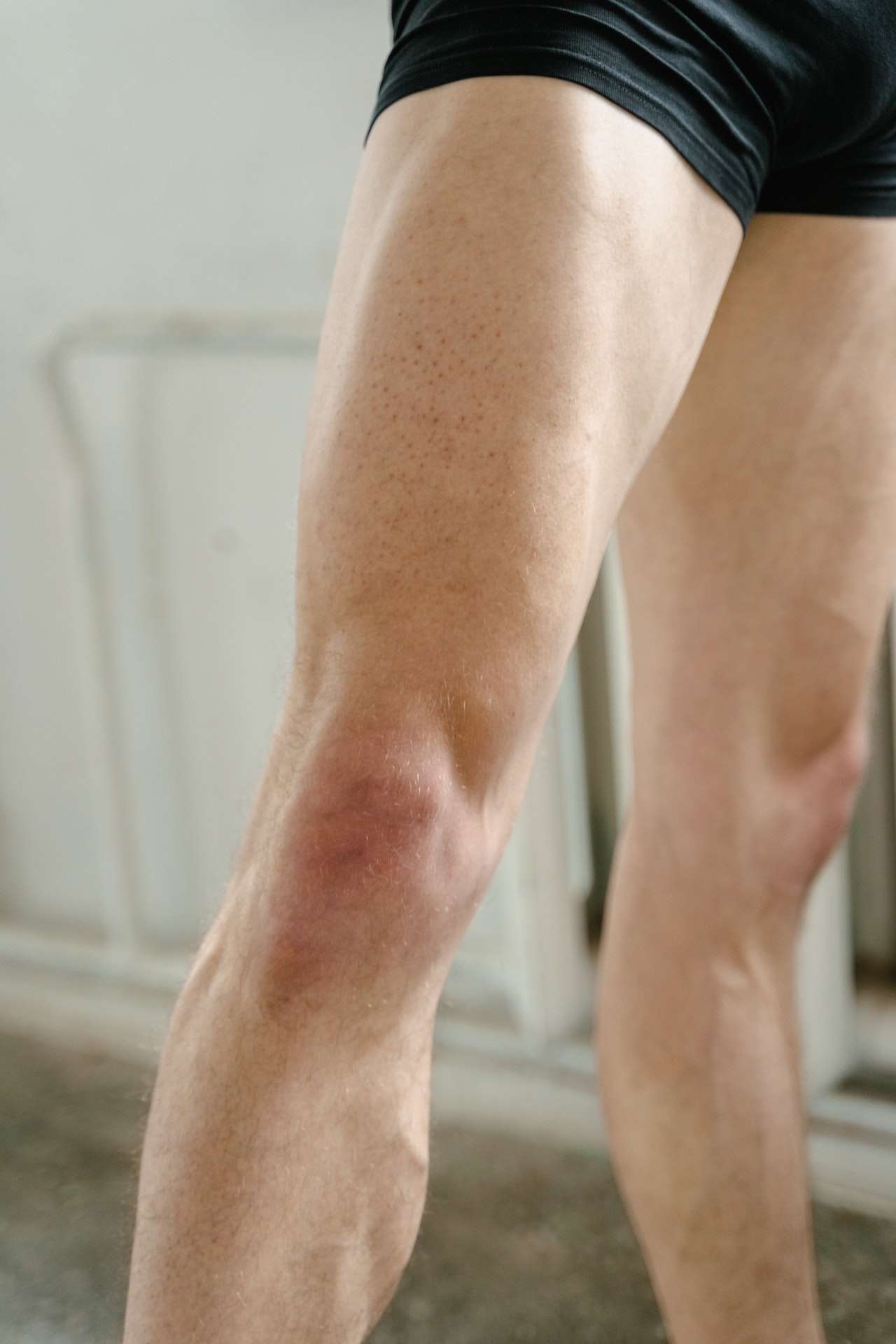|
If you’re a runner, you know that knee pain is an all too common issue. Whether it’s a minor ache or full-on discomfort, it can be enough to make running less enjoyable and even derail your training altogether. But what are the most common types of knee pain from running? This article will discuss the most common types of knee pain associated with running and provide tips for preventing and managing them. We all want to get the most out of our runs and take care of our bodies. Knee pain can be uncomfortable and discouraging, but understanding what type of knee pain you’re experiencing is essential for taking the correct steps toward prevention and relief. From patellofemoral syndrome to IT band syndrome, let’s explore the top three types of knee pain runners experience most often so that you can stay on track with your training goals. As a runner, it’s essential to understand what type of knee pain you may experience so that you can take proactive measures toward preventing or managing any issues that arise. Let’s dive in to discover some of the most common types of knee pains from running so that your runs can remain comfortable, enjoyable, and injury-free!
Table of Contents
show
Overview Of Knee Pain From RunningRunning is a great way to stay in shape and maintain a healthy lifestyle but it can also cause knee pain and discomfort. Runners often experience knee pain due to the tremendous stress on the joint when running. Depending on where the pain is located, there are several common types of knee pain from running. Medial knee pain is felt on the inner side of the knee and can be caused by overuse or weak hip muscles. Pain in the back of the knee is usually associated with IT band syndrome, which involves tightness around the outer part of your thigh.
Another type of knee pain is the runner’s knee, which occurs when too much strain is placed on the kneecap that connects your thighbone to your shinbone. This can cause swelling and tenderness around your kneecap and difficulty walking down stairs or standing up after sitting for an extended period. Finally, long-distance runners may experience knee fatigue-related pain due to a lack of oxygen or improper footwear. No matter what type of knee pain you’re experiencing from running, taking time off and resting, if necessary, is essential. Ignoring discomfort could worsen issues and lead to complications such as patellofemoral pain syndrome… Patellofemoral Pain SyndromeAre you a passionate runner who experiences knee pain? The agony of patellofemoral pain syndrome (PFPS) can be unbearable, making it challenging to take a few steps. It’s the most common type of knee pain from running and can be felt in varying intensity. From a dull ache to an excruciating stabbing sensation, it can affect the inside, outside, and back of your kneecap and travel down your calf or leg. The worst part is that PFPS doesn’t just limit itself to running – walking, kneeling, squatting, and going upstairs are all activities that may trigger this horrible throbbing! Even running uphill or downhill may cause pain below the knee. In addition to feeling soreness in the front of their knee, some runners also experience discomfort on the side of their joints when running but not walking. No matter where you find yourself on your running journey, from marathoner to casual jogger, PFPS can hinder your success. You don’t have to resign yourself to a miserable life, though – with proper treatment and rehabilitation; you can get back on track and closer to achieving your goals! Iliotibial Band SyndromeIliotibial (IT) band syndrome is one of the most common causes of knee pain from running. This injury affects up to 15% of runners, making it a key source of pain and frustration for many athletes. The IT band is a thick fibrous tissue that runs outside your thigh and connects to your knee joint. It stabilizes your hips and legs during movement, so any tightness or damage can cause considerable discomfort. When you run, the IT band rubs against the bone on the outside of your knee joint – if this friction becomes too great, it can cause inflammation and severe pain in your knee. This is particularly true when running downhill or on uneven surfaces. Other common symptoms include sharp pain in the knee when running downhill, pain behind the knee after an injury, and nerve pain from running.
To prevent IT band syndrome from occurring or worsening, it’s essential to perform regular stretching exercises to keep your muscles flexible. It would be best to take extra care when running on uneven terrain or downhill – shortening your stride length and avoiding sudden turns as much as possible. With simple preventive measures and managing existing symptoms, you can minimize your risk of developing this painful condition while continuing to enjoy running! Runner’s Knee is another common type of knee pain from running that often results from poor biomechanics or weak muscles around the hip and core… Runner’s KneeA runner’s knee is one of the most common pains associated with running. It’s a real pain in the neck for runners who want to keep their stride solid and steady. This idiom might be a bit overused, but it’s true regarding the runner’s knee! Pain in the knee from running can affect anyone, though it is more common in people who have recently increased their mileage or intensity of exercise. The symptoms of runner’s knee include: -Pain in the back of the knee that runs down the leg -Pain in the front of your kneecap -Pain when bending your knee or walking upstairs -Grinding or clicking feeling around your kneecap -Swelling near your kneecap Most of these symptoms are caused by poor running form, tight muscles and tendons, overtraining, and weak hip muscles. If you’re experiencing pain in your knee from running, look at how you are running and if there are any changes you could make to improve your form. Additionally, exercises targeting hip strengthening can help relieve pressure on your knees. Rest may be necessary for recovery if you’re still experiencing pain after changing your form and strengthening your hips. Finally, please speak with a doctor about any treatments they recommend to relieve the runner’s knee pain. Chondromalacia PatellaChondromalacia patella, also known as ‘runner’s knee,’ is a common cause of knee pain in runners. It occurs when the kneecap rubs against the lower end of the femur, causing pain and irritation in the knee joint. Symptoms include pain in the knee when bending or running, pain in the hip and knee from running, and sharp pains behind the knee that can run up the thigh. The good news is that most cases of chondromalacia patella can be treated with rest and exercise. Physiotherapy can help strengthen the muscles around your knees to reduce the impact on them during movement. Additionally, stretching exercises can help improve flexibility and range of motion around your joints, which can help reduce pressure on your knees when running or working out.
Activities such as squats and lunges are also beneficial for strengthening the muscles surrounding your knees and improving stability during running hills or high-impact sports. Pain associated with chondromalacia patella typically goes away with rest and treatment; however, taking proactive steps to strengthen your leg muscles can prevent future injuries. Suppose you’re having persistent pain in your knee from running or other activities. In that case, speaking to a healthcare professional about treatment options for chondromalacia patella is essential before it becomes more severe. Taking care of yourself now may save you from more significant problems! With effective treatment, you’ll be back on track in no time – ready to tackle those hills without fear of pain in your knee on impact! Transitioning into patellar tendinitis… Patellar TendinitisPatellar tendinitis is a common type of knee pain that can occur when running. It is caused by the overuse of the patellar tendon, which connects your kneecap to your shinbone (tibia). This condition can lead to pain in the kneecap and sharp burning sensations or aching around the patella. The pain might worsen after running and when going up and down stairs. If you are experiencing any of these symptoms while running, you must reduce your activity levels until you can get a proper diagnosis from a doctor. In some cases, rest may be sufficient for treating patellar tendinitis. Still, if not, you may need physical therapy or medications to help reduce inflammation and manage the pain associated with this condition. You may also need to modify your running routine and use specific exercises to strengthen the muscles around your knee joint. Taking care of any knee pain before it becomes too severe is essential. If left untreated, patellar tendinitis can become chronic and cause more severe issues, such as decreased range of motion in the knee joint or long-term damage to the tendon. Meniscal TearsRunning can be a great way to stay in shape, but it may come with some unwanted pain in the knee. Meniscal tears are one of the most common types of knee pain associated with running, and they can be incredibly frustrating since they often don’t show up until after you’ve finished your run. It’s like the last person to leave the party is the one who has to turn off all the lights. With meniscal tears, there’s usually a sharp and sudden pain in the knee joint or at any point around it, including pain in the back of the knee from running, pain near the knee from running, pain in the knee on running, pain in the outside of knee from running, pain in the inner knee from running, right pain side of the knee from running, right knee from running and even to the point of feeling a deep throbbing ache when you run downhill.
Any time you feel this discomfort while running, you must get checked out by a healthcare professional as soon as possible. Left untreated meniscal tears can worsen, leading to severe joint damage or even arthritis. Knowing your kind of injury and how best to treat it is critical to getting back on track and continuing your training safely. Identifying and treating meniscal tears quickly is critical for long-term success with your exercise routine. Taking preventative measures such as warming up properly before exercising can help reduce your risk for injury. Maintaining proper form while running and wearing supportive shoes designed for your specific activity will help you stay healthy and happy while pursuing your fitness goals. Transitioning now into talking about osteoarthritis… OsteoarthritisAre you feeling pain in your knee after running? You are not alone! Osteoarthritis is one of the most common types of knee pain from running. It can be discouraging for runners to feel like their miles are causing joint pain. However, proper treatment and awareness can keep osteoarthritis from becoming an obstacle to your runs. Like a marathoner at the starting line, let me take you on a journey through osteoarthritis and how it affects runners. Symptoms of this condition include joint pain, swelling, and stiffness that worsen over time. These can be caused by the following: 1) Pain in the knee from running 2) Pain in the knee after running, no swelling 3) Pain in the knee after running a few miles 4) Pain in the knee after running, not during Moreover, soreness due to running on concrete or downhill might also result in osteoarthritis. Despite these painful symptoms, there is hope! If caught early enough, the condition can be managed without surgery or long-term medical intervention. Questions like “Does knee pain from running go away?” and “What happens if a runner’s knee goes untreated?” can be definitively answered with the right combination of rest, medications, and physical therapy. Even something as simple as icing your knees after runs can help reduce inflammation and make it easier to get back out there on your next run. It’s normal to experience some discomfort while pushing yourself physically; however, if your symptoms remain even with rest and recovery, it may be time to consult a doctor specializing in sports medicine. After all, taking proactive steps can save you valuable time later when treating any chronic issues related to your knees or joints. Knowing what works best for each body is critical – so get out there and find what works best for yours! Stress FracturesStress fractures are a common type of knee pain among runners and can be very concerning for those who run regularly; the risk of developing stress fractures increases, as does the severity of their symptoms. According to research, about one in four runners experience knee pain caused by running on a treadmill. It is essential to understand the warning signs of knee pain due to running and what causes it to prevent it from happening in the first place. Common symptoms include sharp pain in the knee when running, soreness or tenderness around the kneecap, and swelling or stiffness around the joint. Pain in the knee may also occur after prolonged activities such as running stairs or hills, and wearing improper footwear while running can lead to knee pain.
In addition to proper footwear and stretches before and after exercising, effective treatment for this type of injury includes rest, icing, compression, and elevation (RICE). Over-the-counter medications such as ibuprofen or acetaminophen can help reduce inflammation and relieve discomfort associated with the runner’s knee. Surgery may be required in more severe cases where there is damage to cartilage or ligaments. Runners need to take precautions when it comes to preventing stress fractures from occurring. Knowing when to take breaks and giving your body adequate time to recover between workouts can go a long way toward avoiding injury altogether. With the proper knowledge and approach, runners can enjoy their sport without worrying about experiencing painful side effects like knee stress fractures. From here, we move on to discussing baker’s cyst… Baker’s CystBaker’s cyst is knee pain from running, which can be pretty painful and concerning. It is characterized by swelling, tenderness, and pain in the back of the knee joint. The most common symptom of Baker’s cyst is a bulge in the back of the knee that causes discomfort when applying pressure. The cause of a Baker’s cyst is usually due to overuse or an injury to the knee joint. This could include pain in the knee from running on a treadmill, pain in the outer knee from running, pain in your knees from running, or even pain behind your knee running up and down your leg. Other causes include pain in the knee joint while running, pain above or below your kneecap from running, and even pain in your foot after running. When treating Baker’s cyst, rest and ice are essential for relieving pressure on the affected area. In some cases, anti-inflammatory medications may also be prescribed to reduce inflammation and swelling. In more severe cases where fluid has built up around the joint capsule, surgery may be necessary to drain it and relieve pressure. Knee pain from running on a treadmill can also be treated with physical therapy exercises focusing on strengthening muscles around the affected area and improving flexibility and range of motion. Additionally, wearing proper footwear while running can help reduce knee stress, preventing injury or worsening conditions such as Baker’s cyst. It’s important to note that if you’re experiencing any persistent or severe knee pain from running, you should consult a medical professional for diagnosis and treatment options tailored specifically for you. With proper care and treatment plan tailored for each case, baker’s cyst can be managed effectively so that runners can get back out there doing what they love without worrying about their knees! Popliteal tendinitis is another common type of knee injury associated with running… Popliteal TendinitisPopliteal tendinitis, also known as jumper’s knee, can be a real pain in the back of your knee when running. It’s an idiom for a reason – if you’ve experienced it, you know how frustrating it is! The worst part is that it can cause pain running down the back of your knee, in and around your knee from varicose veins, and even sharp pain in your kneecap while running. In some cases, popliteal tendinitis can even be caused by using a treadmill. At its worst, this condition can lead to a dull ache behind the kneecap after running or pain below it. There may also be discomfort inside your kneecap when running downhill or doing any other repetitive activity. All of this can add up to a bad experience!
The good news is that treatments are available to help manage the symptoms associated with popliteal tendinitis and get you back on track with your running routine. With proper rest and physical therapy, you can reduce pain in the area and increase flexibility. With time and dedication to recovery, you’ll soon find yourself moving forward again with ease…without worrying about uncomfortable aches or pains! Treating popliteal tendinitis is critical if you want to enjoy all that running offers. Moving on to patellar dislocation… Patellar DislocationPatellar dislocation is common knee pain for runners, especially those running uphill or on uneven surfaces. It occurs when the kneecap slips out of place, causing sharp pain in the knee and sometimes even affecting the surrounding muscles and ligaments. Depending on the severity of the dislocation, it may also cause problems with mobility and range of motion. The most common symptom of patellar dislocation is a sudden sharp pain in the knee, usually located on either side of the kneecap or directly under it. The area can also become very tender to the touch and may be accompanied by swelling or bruising. In some cases, it can be challenging to move the leg due to stiffness in the joint or an inability to fully extend it. You may also experience pain when running downhill or descending stairs and in your left knee from running or on your inner kneecap after running. Suppose you have any pain in your kneecap after running, especially if it’s accompanied by swelling and bruising. You should seek medical attention immediately, as these could be signs of a severe injury. Many potential causes for patellar dislocation include trauma to the knee joint itself, weak thigh muscles, tightness in specific ligaments around the knee joint, overuse injuries such as repetitive strain on tendons and ligaments, lack of flexibility in particular muscles around the joint, and even changes in your gait while running that cause abnormal stress on different parts of your body. To prevent this type of injury from occurring while running, you should make sure that you warm up properly before every session; strengthen your quadriceps muscles through specific exercises; wear supportive shoes; stretch regularly; and pay attention to how your body feels while running so that you can detect any signs of discomfort early on. Taking these preventive measures and being mindful when out on runs can minimize your chances of experiencing patellar dislocation so that you can enjoy pain-free runs for years to come! With proper care and attention for any existing injuries related to running, such as pain below the inner knee from running or pain on the inside of the knee from running, you’ll be able to continue living an active lifestyle free from worry about further damage or complications down the line. Bursitis Of The KneeBursitis of the knee is a common type of pain experienced by runners, caused by inflammation of the bursa sac that cushions the knee joint. This condition can result from repetitive strain on the knee, such as running on a treadmill or engaging in high-impact activities. Symptoms include swelling and tenderness around the kneecap and sharp or shooting pain when bending or straightening the knee. The most common cause of bursitis in runners is overuse due to intense training and lack of rest. Other potential causes can be direct trauma to the knee, poor running form, and technique, improper shoes, weak muscles around the knee joint and poor flexibility in the hips and thighs. It can also be caused by underlying conditions such as arthritis or gout.
To avoid this painful condition, it’s essential to warm up before any running activity and gradually increase your speed and intensity over time. Make sure you use proper technique while running—keep your head up with eyes looking forward, feet facing straight ahead, and arms close to your sides rather than across your body—and ensure that your shoes are designed for running with adequate arch support and cushioning for absorbing shock. Additionally, stretching before and after each run will help maintain flexibility in all areas surrounding the knees. If you experience any soreness in your knees from treadmill running or other activities, rest until it subsides before continuing your routine. Conclusion:Running is a popular exercise but can also lead to knee pain. Knowing the most common types of knee pain from running can help you recognize and prevent them. Patellofemoral Pain Syndrome, Iliotibial Band Syndrome, Runner’s Knee, Chondromalacia Patella, Baker’s Cyst, Popliteal Tendinitis, Patellar Dislocation, and Bursitis of the knee are all common types of knee pain from running. Staying ahead of the game and taking preventive measures are crucial to staying safe while running. It’s essential to listen to your body and not push yourself too hard to avoid these injuries. For example, stretching before and after each run can help reduce the risk of developing any knee pain from running. Additionally, changing your routine every so often can help keep your body healthy and strong while preventing any potential injuries. Did you know that approximately 30% of runners suffer from chronic injury? That’s why I need to know what knee pain I could experience when running. By understanding these common issues, I can take proactive steps to stay safe while enjoying my favorite sport! |
